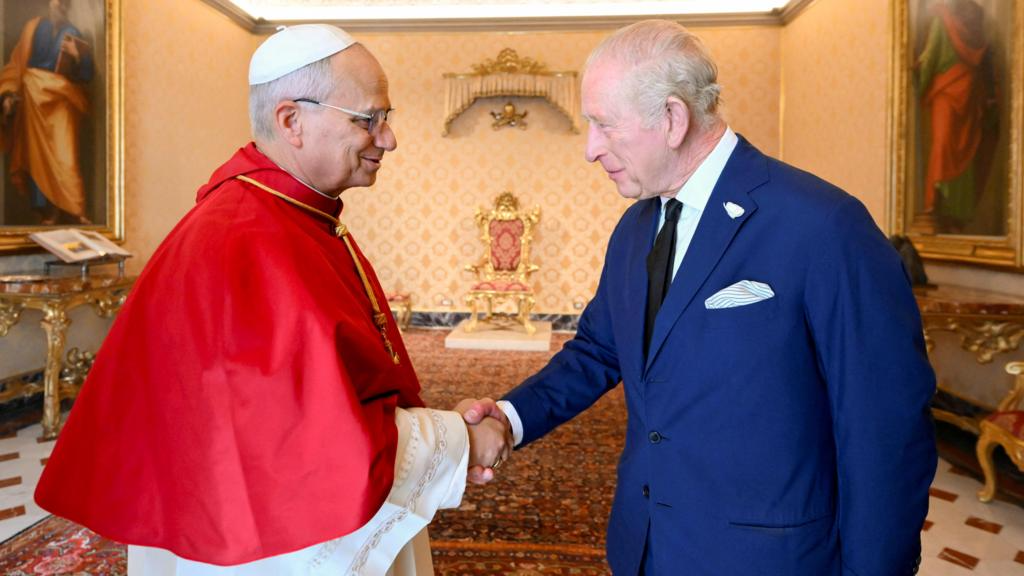
It took Michelangelo to bring the two sides together.
History is made inside the Sistine Chapel.
October 23—prayers were said—in unison—with Pope Leo XIV, King Charles III, and Queen Camilla.
The Roman Catholic Church and the Anglican Church together—for the first time in five centuries
But, for what purpose?

Timing Is Everything
The last time the pope and the king prayed together—England was Catholic.
In the glow of the Sistine Chapel, King Charles III and Pope Leo XIV prayed for creation, peace, and Christian unity — a scene of grace beneath Michelangelo’s ceiling.
Was the moment one of shared grace or something more temporal?
The timing of King Charles’ visit to the Vatican comes when the Church of England enters a divisive period over the recent appointment of Sarah Mullally as the first female Archbishop of Canterbury. Some 85 million Anglicans, worldwide, most of whom—63 million—reside in Africa. A woman serving as head of the Anglican church hints at heresy, according to conservative adherents. Gay rights and the marriage of homosexuals, supported by many Anglicans in England, are seriously opposed by Angicans in Africa.
A shared call to God between the king and pope sends a message of orthodoxy. A belief in the fundamentals of Holy Scripture reaches the far ends of the Anglican flock.
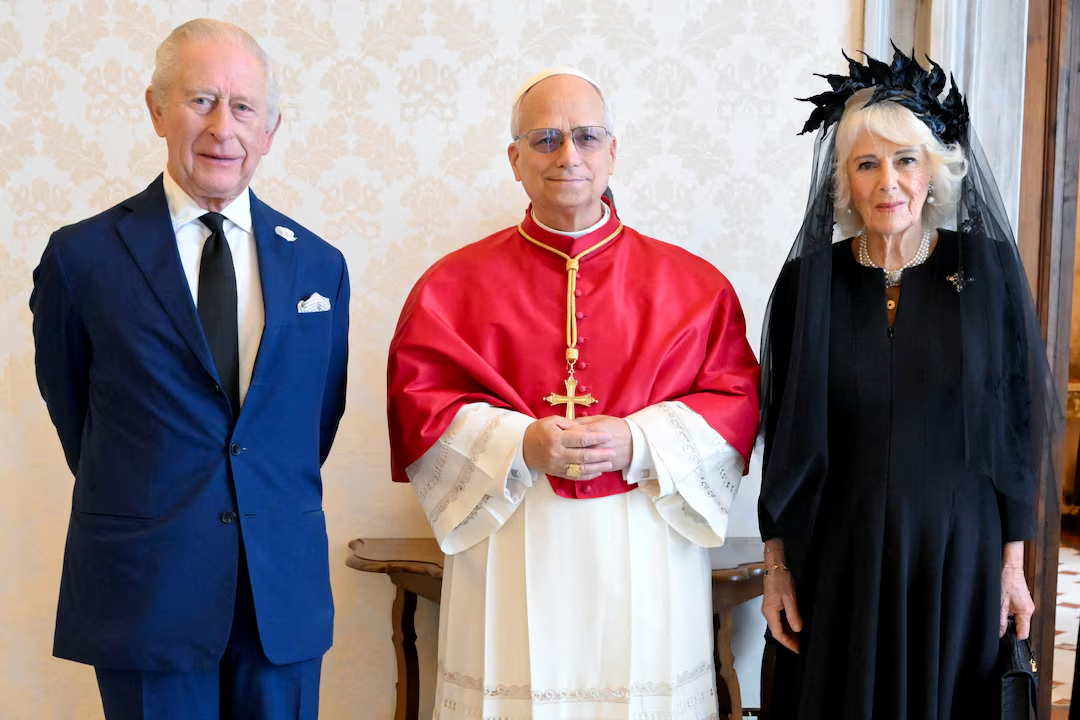
King Charles III, Pope Leo XIV, and Queen Camilla
Paul’s Letter to the Romans
Saving the environment is the touted cause for a meeting between Pope Leo XIV and King Charles III. The British monarch has made it his regione di vita to save the world’s ecology. He finds a home in the Vatican where Laudato si’—the primary encyclical by Pope Francis I—connects the Christian mission to saving the natural wonders of God’s earth.
An excerpt from Saint Paul’s Letter to the Romans was read aloud in Latin and English inside the Sistine Chapel.
The pope, king, and, others, in attendance, heard a message that was agreeable and non-controversial.
“We know that the whole creation has been groaning as in the pains of childbirth right up to the present time. Not only so, but we ourselves, who have the first fruits of the Spirit, groan inwardly as we wait eagerly for our adoption to sonship, the redemption of our bodies. For in this hope we were saved.”
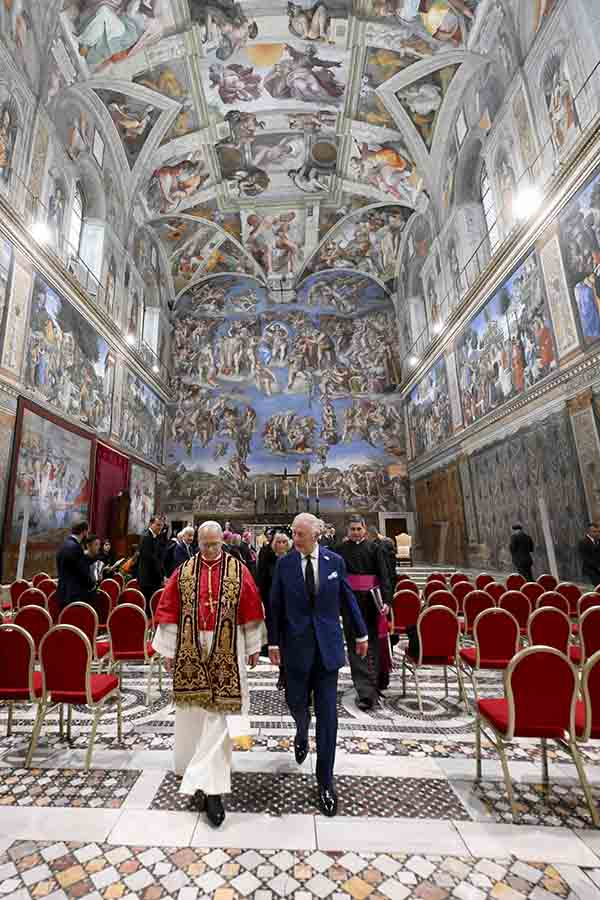
Psalms 8 and 64
The psalms were of a different matter. What was heard—Psalms 8 and 64—in song—by the pope and king was more a warning and a call to action.
Psalm 8: You have set your glory in the heavens. Through the praise of children and infants you have established a stronghold against your enemies, to silence the foe and the avenger.
Psalm 64: Hide me from the conspiracy of the wicked from the plots of evildoers.
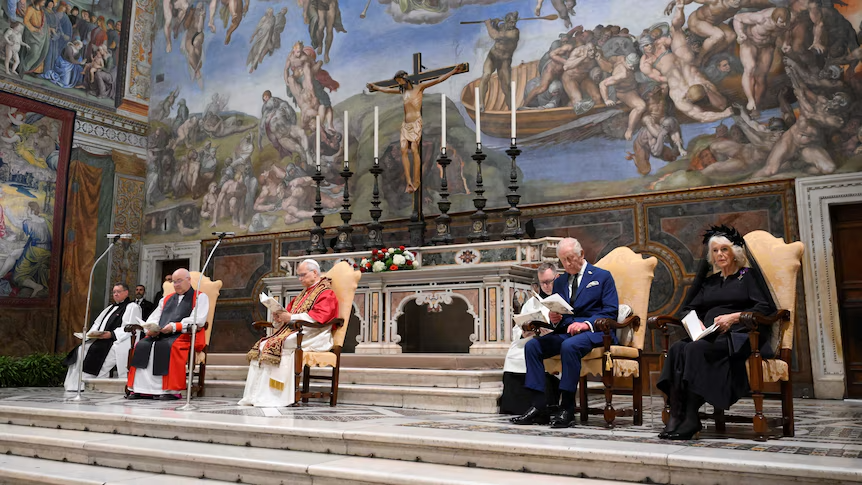
Pope Leo XIV, King Charles III, and Queen Camilla attend a prayer service inside the Sistine Chapel, October 23, 2025
A Call for Unity in Face of Growing Persecution
While the monarch and the pontiff stood together in Rome, their flock bled in Africa.
Islamist militants struck the village of Napala in Mozambique’s Cabo Delgado province, killing dozens of Christians, razing homes, and burning two churches to the ground. In Nigeria, armed men attacked rural communities once more, leaving families dead and displaced. None of the victims were asked if they were Anglican or Catholic. They were slain simply for being Christian.
The persecution of Christians has been ongoing for more than 10 years, now, in Africa, and in parts of Asia.
The unity that King Charles and Pope Leo sought in ritual is already being forged in blood. Across Africa, persecution makes no distinction between denominations. In the eyes of their attackers, Christ’s followers are one.
A prayer beneath the Sistine ceiling carries weight far beyond liturgy. It is a call to conscience. If believers can be murdered together, they must also stand together — to speak with one voice against violence, to defend the innocent, to act as one Church when the world fractures into many.
The meeting in Rome was not only an act of diplomacy or ecumenism. It was a mirror held up to the faith itself. For centuries, the Reformation divided Christians. Now, persecution unites them.
The joint prayer of king and pope was a gesture of hope — but also a warning: unity cannot wait for perfect theology. In the face of hatred, it becomes a matter of survival.

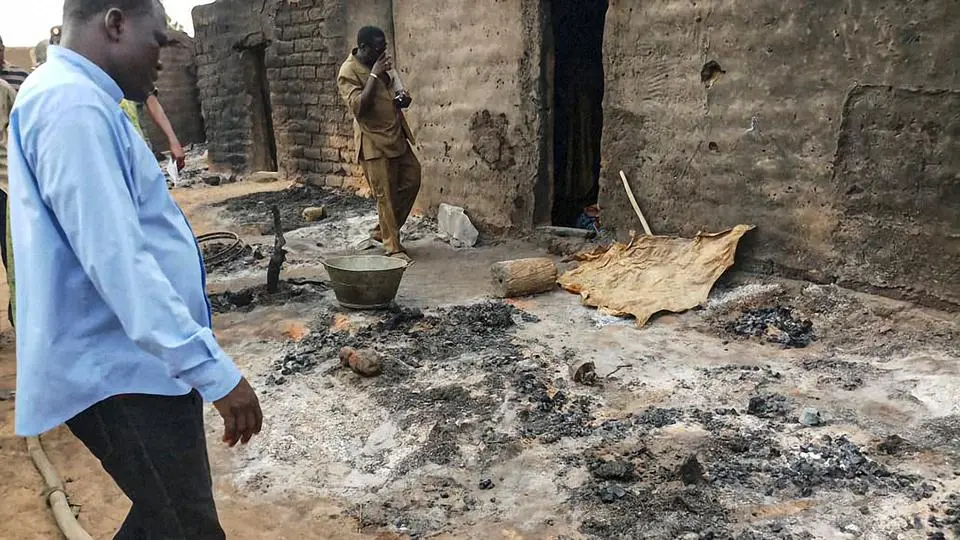
The remnants of attacks on Christians in Africa: Mozambique and Mali
A Break with the Past
Queen Elizabeth II met five popes during her 70 year reign—from Pope John XXIII in 1961 to Pope Francis I in 2014. Her meetings inside the Vatican were diplomatic, private, and carefully circumscribed. They reflected cordial relations, not shared liturgy.
King Charles’s visit breaks that precedent. His visit embodies reconciliation. A full state visit to the Holy See made him Royal Confrater of the Basilica of St Paul Outside the Walls, an honorary fellowship to symbolize spiritual friendship between the Vatican and the British Crown.
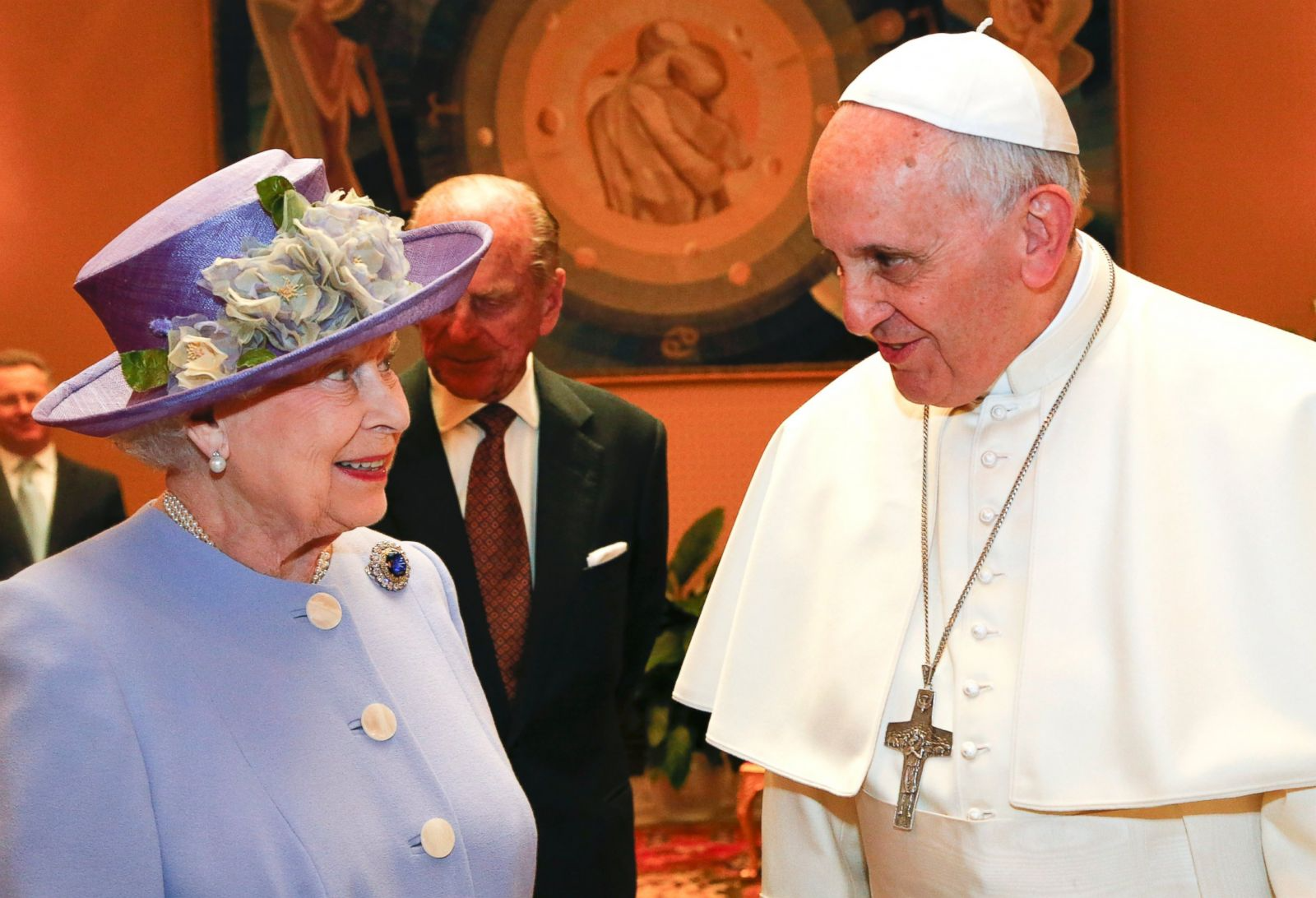
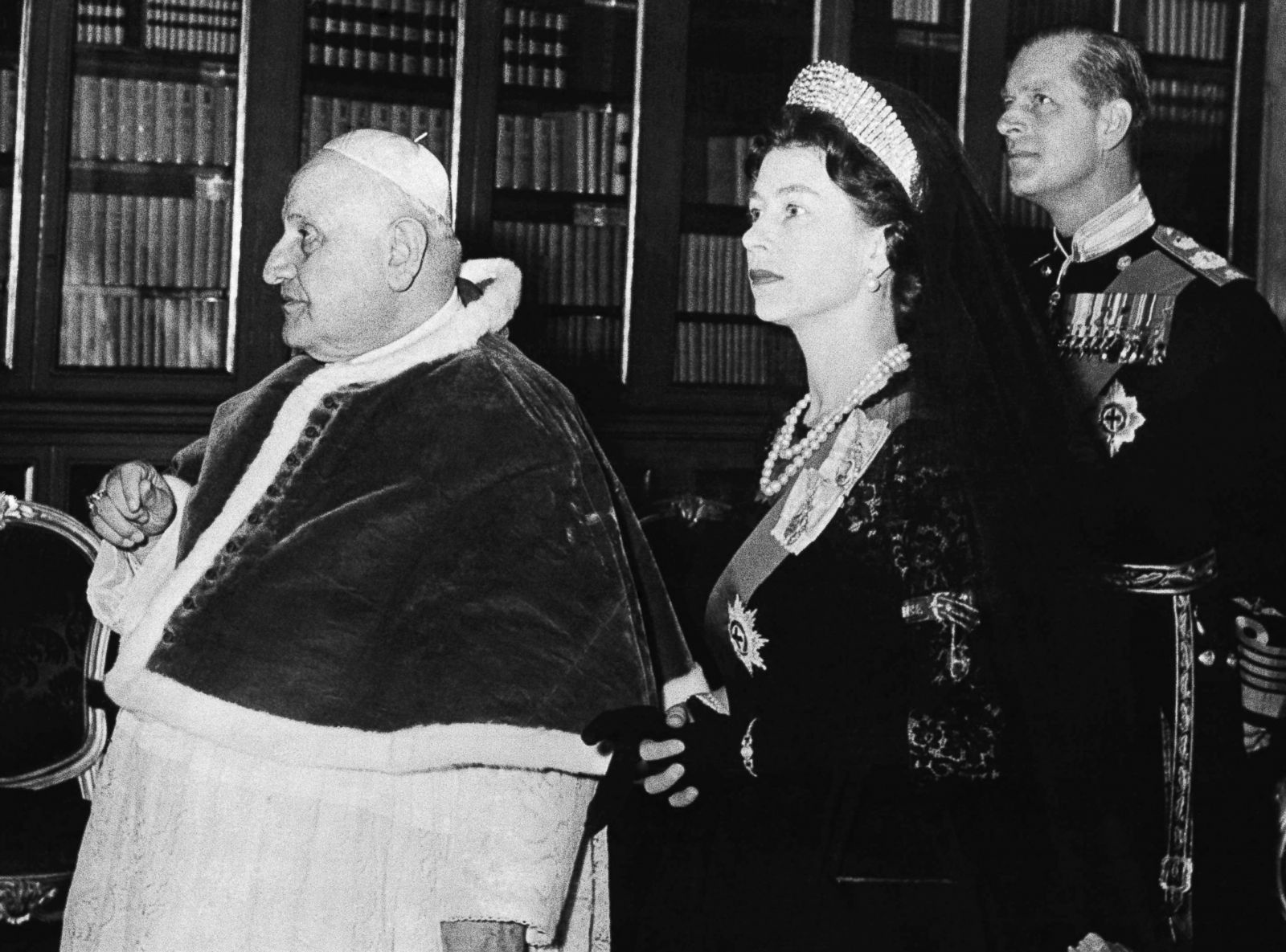
Queen Elizabeth met Pope Francis I in 2014 and Pope John XXIII in 1961
The Long Shadow of the Reformation
When Henry VIII broke from Rome in the 1530s, he severed England from papal authority to make himself head of the new Church of England. The schism led to centuries of distrust, persecution, and political division.
Though the rift gradually softened—formal diplomatic ties were restored only in the 20th century—relations between Canterbury and Rome have remained delicate.
Now is a different time. Both pope and king face the same challenges: A secularist Europe becomes Godless, Christians in Africa face genocide, moral ambivalence in the West turns to moral degeneracy.
Today, pope and king pray together. Tomorrow, they must act.
Editor’s Note: The web site for the Vatican is https://www.vatican.va/content/vatican/en.html, the web site for the British monarchy: https://www.royal.uk
—————————————————————————————————————————————————————————————————————————————
Please visit our DVDs Page to shop our latest collection of DVDs on all things Italian: Films from Italy's Golden Age, Documentaries on Italian American life, ancient Rome, and religion.
Please visit our Books' page to review our latest inventory of books on all things Italian: cookbooks, history, art and culture.
Other articles to read...